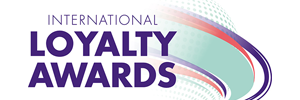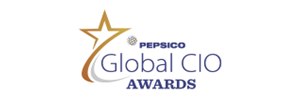29 Apr

In the era of commerce predominantly driven by partnerships, being on the same page with all business partners is crucial. Efficient channel management brings better sales and marketing results, such as channel revenue. To achieve this, platforms like Salesforce offer cloud-based programs for channel management. Once your needs and roles are identified as a channel, you will come across a relevant channel program in Salesforce. A solution that can be integrated within your channel will let you create value for the end customer as a whole team.
What is a Channel Program in Salesforce?
A channel program in Salesforce is the sum of every activity and person involved in delivering a product, technology, or service. Here’s some info to let you picture all its actors behind the scenes: Channel partners are distributors, independent dealers, retailers, consultants, tech integration partners, or any other body. How can such a crowd embody the same brand vision and act as a whole?
Channel partnerships can be high-yielding once established in sync with your brand’s destination. However, in today’s data-driven world, there’s much more than meets the eye in this journey. It’s now more than solely defining work processes or tangible sales targets. It’s now a more complex and not a linear path. You need a well-structured strategy to resolve this.
Growth through Partnership
From giants to smaller ones, countless businesses use channel partners to distribute their products and services worldwide. Usually, a partner has specific knowledge of their local market and a pre-existing regional customer base. This saves time and effort to expand your path to new markets. In this light, coordinating a channel program in Salesforce should not only mean supervision from a superior authority. Channel management is a two-sided relationship, continuously fostering and learning from each other’s mistakes and achievements.
This should not downplay the need for a single foundation in managing such a multilayered and partnered ecosystem. The brand owner should define the base strategy strictly. When reinforced with the correct data derived from CRM and AI-powered resources, it is a powerful guide for partners to understand which direction to steer.
PRM Combined with CRM in an Engaging Way
Partner Relationship Management (PRM) applications integrated into CRM, your channel base, can help you manage all aspects of a B2B ecosystem. This way, you obtain a holistic understanding of all channel activities across sales, marketing, and service monitoring and evaluate them.
PRM includes templates, personalization tools, advanced analytics, and many other features. Today, with the impact of community-driven trends in technology, Apex Loyalty implemented on-site tools within PRM systems. On-site engagement and gamification tools help you communicate with your B2B channel partners in a fun and rewarding way.
Personalized Experience for Everyone in Channel Program in Salesforce
Still, a modern channel program in Salesforce today encompasses more than all of the above. Whether a customer or a partner, any user seeks personalization and customization. In a world with thousands of similar products, a personalized experience is not only for the customers anymore. It also tells about the distinguishing value you are offering.
Salesforce has long been operating with extensions, and channel management is among the solutions offered in the AppExchange. With Salesforce AppExchange partners programs, there are numerous solutions. However, the initial interface where both sides meet is a user-friendly and customizable portal in the channel program in Salesforce.
As mentioned before, the channel partnership is a reciprocal relationship. When channel partners are welcomed with an easy interface, they will also decide whether to sell your or a competitor’s product. Apex Loyalty’s drag-and-drop design wizard provides your customers the simplicity and familiarity they seek. This way, they are encouraged to become more present in this engaging platform.
Enabling and Engaging Channel Partners
Speaking the same language as a whole community is important. Program partners can flawlessly represent you when equipped with spot-on training and correct tools. Apex Loyalty provides email and SMS marketing tools as part of a branded and sustainable communication approach. Also, with the built-in training tools Apex Loyalty offers, training your channel is easy and fun.
A channel program in Salesforce also strengthens from relevant customer campaign segments based on CRM data and behavior patterns. The Apex Loyalty segmentation and campaign wizard lets you produce unlimited customer segmentations and campaigns for collecting and redeeming points. Such a rewarding environment will drive your partners to be more enthusiastic in considering your customers as their customers.
Measurable Channel Performance
In a wildly competitive world of commerce, every move reflects on revenue. That’s where scalability became a driving force in all this complexity. With a channel program in Salesforce, you can create programs for different types of partners classified as resellers, value-added resellers (VARs), distributors, and managed service providers (MSPs). You can also categorize your partners according to their geographical location or their level of expertise.
Salesforce offers Key Performance Indicators (KPIs) for defining partner levels. Creating channel program levels enables you to assign each partner to a level based on their performance. Bronze, Silver, Gold, and Platinum levels offer different incentives to encourage partners to move towards a better level. For instance, Salesforce gold partners have access to market development funds, which is a solid motivation to increase sales. Seeing such incentives, a Silver-level member would try to work up to the Gold level.
Apex Loyalty embraces a similar approach – Silver, Gold, and Platinum levels are offered, and partners can redeem points while climbing up the ladder. With Apex Loyalty, you can track your partner’s loyalty in various scalable ways. It’s a powerful tool for determining how each partner might help you reach your goals.
You can read our previous article from https://www.apexloyalty.com/b2b-sales-incentives/







